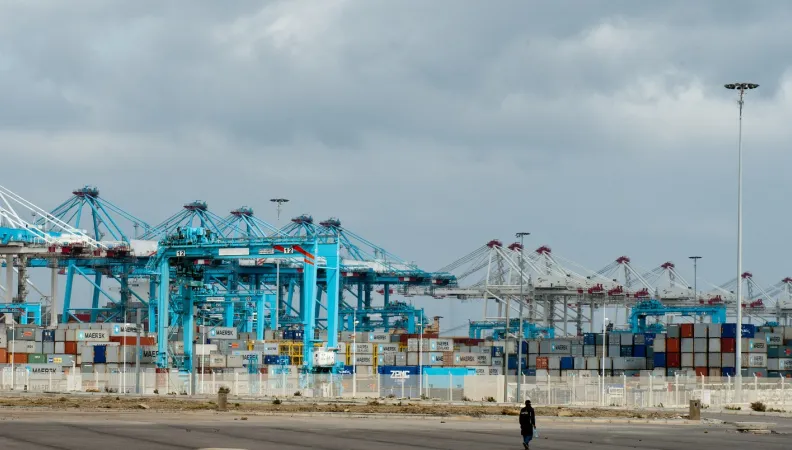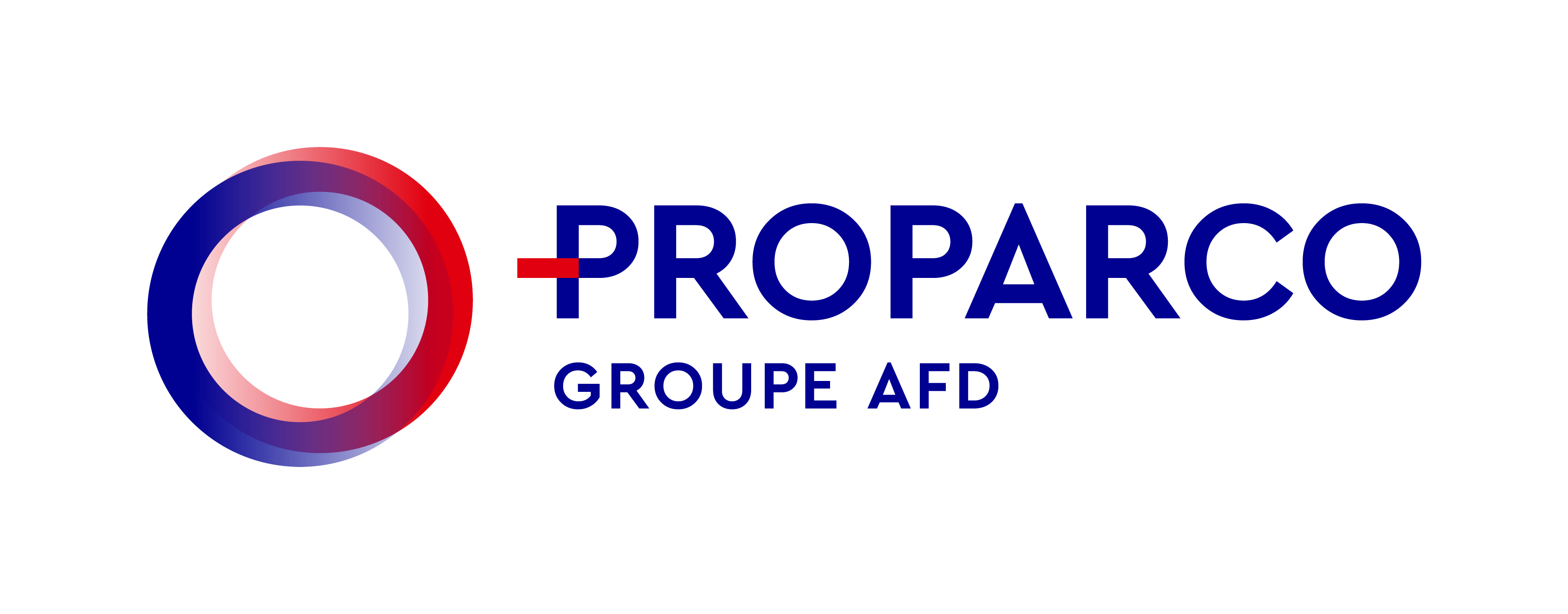Share the page
Becoming a “green port” in Africa
Published on
- Lionel Franceschini Project Manager (LL.D.) Agence française de développement (AFD)
- Véronique Pescatori Project Manager Agence française de développement (AFD)

Private Sector & Development #26 - African ports: gateway to development
This 26th issue focuses on the African port sector. The magazine features analyses provided by experts from ISEMAR, SETRAG, Jeune Afrique and AFD, to get an insight into this rapidly growing sector that is so vital for the Continent’s future growth and development.
Port authorities have a number of levers at their disposal to pursue a “green port” model: contracting taxation, environmental certification and the adoption of international standards. However, while ports in developed countries are evolving swiftly towards more sustainable models, their African counterparts may require support in responding to environmental challenges and this is where development agencies can help.
Although essential to global commerce, the maritime transport sector is also creating a number of negative externalities. One example is combustion of the heavy fuel oil used by marine vessels, generating sulphur oxide emissions that are estimated to result in some 60,000 premature deaths annually within the European Union (Van Eeckhout, 2015). Furthermore, some 6.4 million tons of marine waste are discharged each year into our seas and oceans (UNEP, 2005); in 2015 alone tankers discharged some 7,000 tons of hydrocarbons (ITOPF, 2016). While most of these impacts are generated by the vessels themselves, ports also cause a certain amount of environmental damage, including aquatic and atmospheric pollution, habitat alteration, waste generation, and more. Ports are often located in very densely populated areas and may generate conflicts over the use of coastal areas or harmful externalities for nearby populations (noise and light pollution). Initiatives such as specific standards, labels and certification, and international and EU regulations are currently persuading the majority of players in the maritime sector to reduce their environmental and climate footprints.
ACTION, BEST PRACTICE AND CERTIFICATION: TOOLS FOR THE DEVELOPMENT OF “GREEN PORTS”
More and more ports are taking measures to prevent marine and atmospheric pollution, improve energy efficiency, enhance their waste management processes, and reduce their greenhouse gas emissions. Due to its key position within the logistics chain, the port authority is the key driver in a port’s development. As managers of their own facilities, port authorities are in a position to integrate both environmental and social issues into their strategic planning. They are also able to contribute in a very concrete manner to making their infrastructure more sustainable, for example through the use of energy-efficient, sustainable materials, or by providing in-port electrical connections that enable vessels to avoid consuming their own fuel while in port. As managers of commercial activity zones, port authorities are in a position to influence the behaviour of the various entities operating in the port. The authorities can make use of both regulatory tools and financial incentives: for example, port taxes can be tied to a vessel’s environmental performance, i.e., higher taxes for carbon-heavy fuels and/or lower taxes for “clean” engines. They may also use their contracting powers to effect change by inserting environmental clauses into concession arrangements regarding the energy efficiency of handling equipment. As a local stakeholder, the port authority is also a key voice in debates over the relationship between the port itself and its environment, covering issues such as urban planning strategy, goods transit arrangements, etc.
Port authorities may sign up to various environmental certification systems such as ISO 14001, the European Union Eco-management and Audit Scheme, or the Port Environmental Review System. The European Sea Ports Organisation (ESPO) has developed an “EcoPorts” label for ports voluntarily adhering to best sustainable development practices and ninety-eight ports have been certified to date. Enhanced awareness of environmental and climate challenges coupled with the availability of these different resources have given rise to the concept of the “green port” where both the port authorities and stakeholders adopt a more eco-friendly and society-friendly mindset, focusing on the three – social, economic and environmental – pillars of sustainability.
IMPLEMENTATION DIFFICULTIES IN DEVELOPING COUNTRIES
Although these initiatives are entirely voluntary, the current international context combined with fierce competition between ports at global level are providing the ports themselves with a strong incentive to implement them. A study undertaken by ESPO shows that substantial progress was made in terms of environmental management between 2004 and 2013.¹ A large number of major international ports are now pursuing ambitious environmental policies (Rotterdam, Amsterdam and Antwerp inter alia ). In many developing countries however, and notably in Africa, ports are struggling to mitigate the negative impacts of their activity. Indeed, a number of African ports have to contend with a range of difficulties and issues which hamper both the identification and adoption of best environmental practices. The choice of effective measures and their implementation are complicated by geographical, regulatory and technical factors. For example, in-port electrical connections require a reliable, powerful electrical supply – something not available in every country. Obstacles may also be of an economic and financial nature and it may be difficult to justify measures that are not directly linked to port activities in a context of fierce competition. There are also management and governance difficulties: a more sustainable approach must be underpinned by an effective and stable environmental management system, however institutional frameworks may be in very poor shape. Moreover, the sheer number of port stakeholders complicates the implementation of effective and comprehensive measures which require careful coordination. Social factors may also come into play; the maritime sector is becoming increasingly automated, raising the spectre of job insecurity among cargo handlers. Funding agencies such as Agence Française de Développement (AFD) can play an important role here by supporting initiatives aimed at mitigating environmental and climate impacts, reducing energy consumption or enhancing the living and working environment around the port. Such partnerships may take a variety of forms, ranging from assistance to skills transfer or even direct funding.
THE ROLE OF FUNDING AGENCIES
Funding agencies can make infrastructure financing contingent on preliminary environmental studies – or even fund such studies directly. To take an example, AFD financed an environmental and social assessment study in favour of the Autonomous Port of Pointe Noire (Congo-Brazzaville) as well as a study on the feasibility of designing a waste management system and a wastewater system designed for the port (see Insert).
AFD and the Autonomous Port of Pointe Noire (PAPN)
In common with all ports, the Autonomous Port of Pointe Noire generates negative externalities for its surrounding environment. As part of the port’s Investment Priorities Programme, AFD has been helping to fund port infrastructure (quays, open storage areas, etc.) since 2009. A consultancy firm was commissioned to devise and implement an environmental management system at Pointe Noire and various studies were produced concerning rainwater treatment and the management of waste and hazardous materials. Funding was also given for a plan to improve port procedures and cut waiting time in harbour and port congestion, both of which negatively impact the environment. In addition, as PAPN had to contend with a pollution incident during dredging operations, due to the presence of bituminous sands in the subsoil, AFD and the European Investment Bank insisted on an environmental and social management plan for the dredging operations which are so essential to the port’s operations. But PAPN knows that more needs to be done in terms of environmental and social management and it has commissioned a simplified “sustainable development” audit to identify areas for improvement and, ultimately to do what it takes to obtain an environmental label or certification. In the shorter term, it has already set out the priorities for coming years: construction of the wastewater system recommended by the preliminary study and improving waste management (in particular by setting up a “MARPOL Ecopoint” pollution monitoring station). Aside from these specific investments, and given the wide range of environmental and social aspects that need to be monitored, PAPN needs a proper environmental and social management system and a suitably adapted organisation structure.
Funding agencies may also seek out additional funding for their partners from international “green fund” institutions – principally in the form of investment subsidies. Of course, they will also be directly involved in financing more effective infrastructure and agencies often play a key role in transferring skills between developed and developing countries.
Funding agencies are also able to take a more global perspective at the level of a sub-region. For example, the German development agency, Deutsche Gesellschaft für Internationale Zusammenarbeit (GIZ) launched the Sustainable Port Development in ASEAN Region programme in partnership with two regional intergovernmental organisations.² The results of this programme are quite encouraging and all of the partner ports have improved their safety, health and environment management systems. Funding agencies also focus on the links between a city and its port. This may involve helping a city to develop around a port by coming up with an integrated urban development strategy – AFD is currently financing studies and expertise with a view to developing the area around the new port of Kribi (Cameroon). Older cities sometimes need help with managing the traffic problems generated from increased port activity or building storage areas outside a congested port.
Ports undeniably play an important role in mitigating the negative externalities generated by the maritime transport sector. Major strides have already been made, especially in developed countries, as witnessed by the measures introduced in European ports and the growing success of international standards and certification procedures. While some initiatives are clearly difficult to replicate in developing countries, others must be promoted, encouraged and supported. Funding agencies can help the players involved in this sector, particularly in Africa, to start thinking in terms of a “green port” rationale – for example, by tying infrastructure funding to the adoption of more sustainable practices.
¹ Over this period the number of ports implementing an environmental management system was up 43% and the number publishing an environmental report was up 33%.
² This programme was set up in cooperation with the Association of South East Asian Nations (ASEAN, composed of Brunei, Cambodia, Indonesia, Laos, Malaysia, Myanmar, the Philippines, Singapore, Thailand and Vietnam) and with the Partnerships in Environmental Management for the Seas of East Asia, an intergovernmental organisation which developed the Port Safety, Health and Environmental Management (PSHEM) System), a standard equivalent to ISO 14001 and 9001 certification and the British standard OHSAS 18001.
REFERENCES
Van Eeckhout, L., 2015. La pollution du transport maritime plus dangereuse que celle du transport automobile. Le Monde, 22 July 2015. Available on the website: http://www.lemonde.fr/planete/article/2015/07/22/la-pollution-du-transport-maritime-plus-dangereuse-que-celle-du-transport- automobile_4694015_3244.html
United Nations Environment Programme, 2005. Marine Litter: An analytical overview.Available on the website: http://www.marinedebris.info/sites/default/files/literature/UNEP%20Marine%20Litter%20Analytical%20Overview.pdf
International Tanker Owners Pollution Federation Limited, 2016. Oil tanker spills statistics 2015.Available on the website: http://www.itopf.com/fileadmin/data/Documents/Company_Lit/Oil_Spill_Stats_2016.pdf
European Sea Ports Organisation (ESPO), Port Performance Dashboard May 2013.Available on the website: http://www.espo.be/media/espopublications/espo_dashboard_2013%20final.pdf


